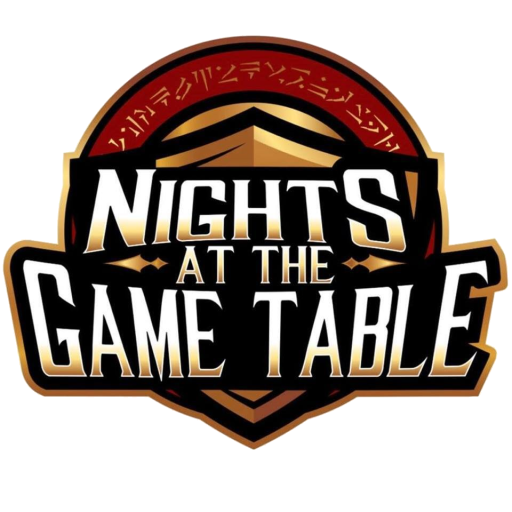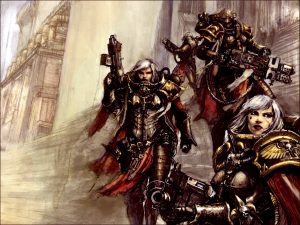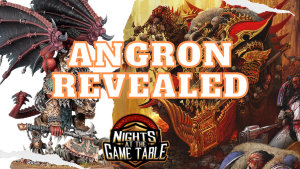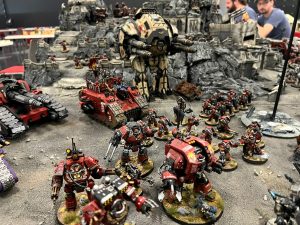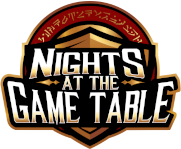In previous articles we’ve touched on the four kinds of gamers as well as the value of passive thinking. This week’s article is fourth and final in a series of four, in which we have combined these two concepts to play to our strengths and embrace our preferred playstyle.

Specifically, for each playstyle archetype, we are looking at two major pregame steps we can take to help improve our chances of success:
- Build a list that works in our preferred playstyle
- Establish a gameplan or script for how the list will work in various scenarios and matchups

This week we are focusing on the Archon, the reactive-tight playstyle, which fits someone who wants to set and execute traps to capitalize on the situation at hand. Armies that will be best for this player are often ones with a lot of mobility in order to converge forces on port.
The Archon playstyle is about having plans in place and the combination of mobility and range or durability to be able to react and spring traps to deal the most damage possible each turn. This is most commonly achieved by use of a mobile, reactive fire base with incredibly fast and potent counter assault units.
This playstyle can be executed by any number of army builds, but generally is most successful if built around a plan for going second and mitigating alpha strikes For this week, let’s look at a list featuring the epitome of speed, from ETC Team America Captain Sean Nayden.
Kabal of the Black Heart Spearhead:
Archon: Splinter Pistol, Venom Blade
3x Ravager: 3 Disintegrator Cannons, Shock Prow
Cult of the Cursed Blade Battalion:
2x Succubus: Archite Glaive, Blast Pistol
2x 20 Wyches: Hekatrix with Blast Pistol, 2 Shardnet & Impalers
5 Wyches
Dreaming Shadow Harlequin Outrider:
Troupe Master: Warlord, Fusion Pistol, Harlequins Caress
Solitaire
3x 6 Starweavers: Haywire Cannons, 4 Star Bolas, 2 Zephyrglaives

This list is designed to use mobility to respond to threats and keep the firepower elements safe with counter-assaulting roadblocks. The two Wych blobs have the option to deploy in the Webway with a stratagem, or push forward and get between opponents and the Skyweavers and Ravagers.
With the list taken care of, the second part of the equation is game planning. There is a good bit of redundancy and repeated efficiencies in the list which allow for several options and mitigation techniques.
As a reactive player and build, this list is not really built around an alpha, and will be fine going second. As such, deployment will reflect this – utilizing various stratagems to deep strike important units, including one or both large units of Wyches. Everything else is kept back, out of range or line of sight, as much as possible. Combined with the Lightning Fast Reflexes stratagem, the Harlequin bikes can be surprisingly durable, making them -2 to hit combined with their natural 4++ invulnerable save.

From this defensive posture, we can move quickly into the gameplanning portion. With this reactive-tight playstyle, the game plan is designed to shift based on board state each turn, capitalizing on any opportunities presented by the opponent.
Against a defensive postured opponent, the list will look to stay safe at a distance, using terrain and positioning, and take advantage of any gaps or weaknesses that present themselves with the super fast Harlequins and deep striking Wych blobs which can shoot forward and tie up enemy shooting. Against an aggressive opponent, this gameplan doesn’t change too much as all the shooting elements have fly and can fall away from combat. One unit of wyches can screen while the other positions to counter-charge and hold down units with the Shardnet and Impalers in the units.
From there, the broad strokes of the gameplan are:
- Use the Wyches to tie down units that are threatening by their shooting or combat and speed potentials.
- Use the speed, shooting, and combat potential of the Harlequin bikes to take board control.
- Put down fire with the Ravagers and the bikes
From there we can move on to practice and learning some of the finer details. This list uses units that are capable of working independently, but best when overlapping their threat potential and reducing the potential for return threats.
Specifically, we want to practice the following:
- Moving in ways that gets units in position to do what they need to do, while also not exposing themselves to more threats than necessary.
- Patience with the Combat Threats: Just because the Solitaire or Skyweavers can cross the board and charge a unit in the backfield, doesn’t mean they should turn one. Practice to see how much punishment and attention they can endure and don’t throw them away heedlessly.
- The value of all the various strong stratagems available to the army. The list doesn’t have too many Command Points to spare, so each stratagem spent needs to provide value in return. For example, we need to know solidly whether the stratagems to reserve and deep strike units will protect them while not reducing their offensive potential too much. Similarly, Lightning Fast Reflexes is a great stratagem, but if the opponent can switch attention to another unit, it might not end up being worth the 2 CP.
With the blueprint in place we have the tools to practice and run a reactive list that can flow like water and doesn’t rely on hundreds of bodies.
This concludes this series outlining preparation for running lists leaning into your strengths and inclinations as a player. We hope you have enjoyed it, and sure to drop a comment telling us what lists and preparations you’d like to see next!
